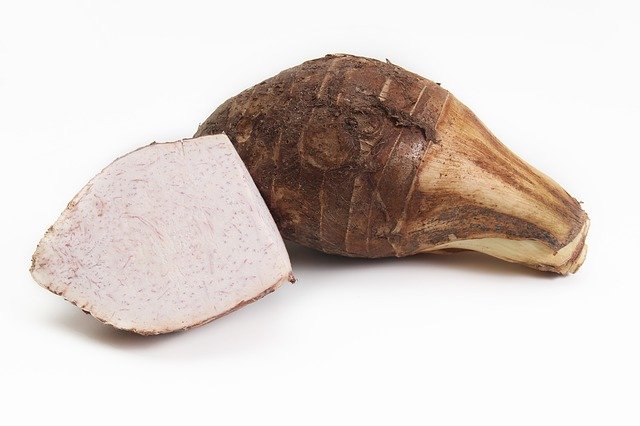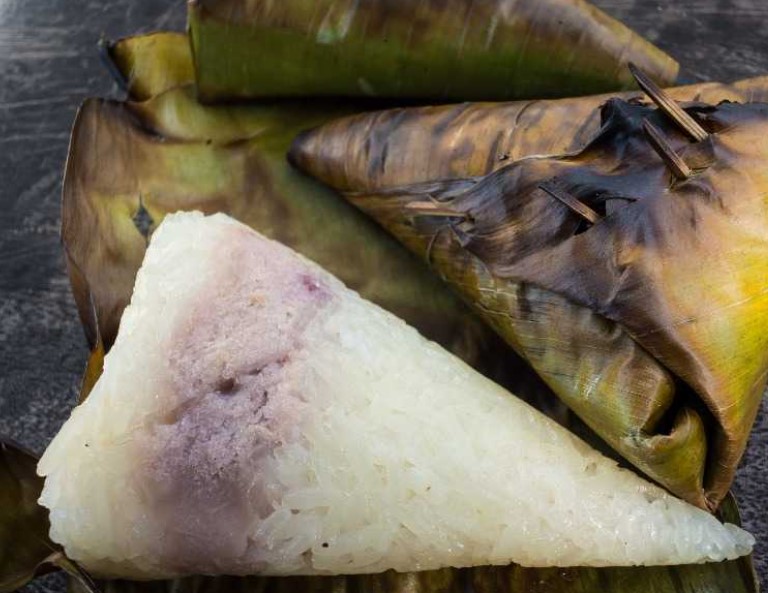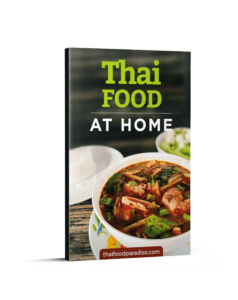Taro: What Does It Taste Like?

Taro is an interesting root vegetable native to Southeast Asia and other areas. Its white flesh with purple blemishes is definitely unique. When in Thailand, there’s a high probability you’ll encounter taro, whether as a snack from a market food stall or a flavour option when ordering ice cream. But what does taro taste like? Find out all you need to know about it as an ingredient in Thai cuisine.
Taro in Thai Food: Pueak ( เผือก )
The actual Thai word for taro, pueak, is quite a fun word to say because the vowel sound has a very strong (ue) almost gutteral ring to it. In Thailand, it’s very common to go to a market and purchase boiled taro, which is given to you in cellophane bags. Thais eat the boiled taro as a snack.
Another way pueak is used is to take raw slivers of it and deep fry it. Again, this makes for a tasty on-the-go snack that the locals enjoy eating. Perhaps my favourite use of taro in Thai food is as an ice-cream flavour. The Thais boil taro up and make ice cream from it.

There is also a really nice dessert that is a mixture of boiled pieces of taro and coconut milk. Another really nice dish that you’ll often find in the North or Eastern regions of Thailand is sticky rice cooked inside bamboo tubes with bits of boiled taro added to them. The warm sticky rice is a particularly wholesome snack on a mild evening during the country’s lower temperature months from October to January.
Taro is an extremely starchy vegetable so it’s a great source of carbohydrates. It’s worth noting that you can’t eat taro or handle it raw without gloves because it’s an irritant to your throat. Thankfully, any cooking method removes this irritant so it’s safe to eat in whatever form you happen to find it in Thailand.
Aside from its starchiness, taro is nutritionally a rather surprising and underrated vegetable. According to Healthline, it’s a good source of fiber, good for your blood sugar, and good for your gut. That’s a pretty sweet deal for a vegetable available so cheaply in Thailand.
How Does Pueak (Taro) Taste?

The taste is quite interesting. The way I could best describe it is that it kind of tastes like the sweet slightly starchy milk that’s left in your cereal bowl after you finish eating the cereal. I know that’s quite specific but it’s the first thing that pops into my mind.
Probably a more accurate way to describe the flavour is that it’s similar to but noticeably sweeter than a sweet potato (or yam, depending where you’re from). In other words, it’s a pleasant combination of starchy-sweet.
I personally like to eat taro most as an ice cream flavour. It tastes incredible. And it’s a nice alternative to eating coconut ice cream all the time. Thais are actually quite inventive with their ice cream flavors; I’ve seen everything from jackfruit to durian. But taro would be at the top for me. I just like it.
Wrapping Up
I hope that answers any questions you might have about what taro tastes like and how it’s used in Thai cuisine. Make sure you check the site regularly to get more Thai food tips and updates.
I lived in Thailand for a few years during my 20s during which time I fell in love with Thai food. Along with my Thai partner, I cook and eat tasty Thai dishes 3 or 4 times per week. I’m here to bring you recipes, Thai food tips, and suggested cookware for making Thai food.
